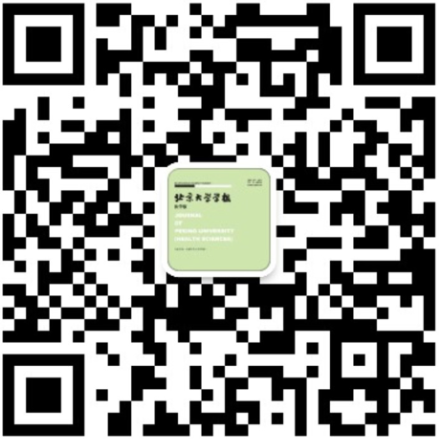北京大学学报(医学版) ›› 2020, Vol. 52 ›› Issue (4): 715-718. doi: 10.19723/j.issn.1671-167X.2020.04.023
《严重过敏反应急救指南》临床问题与结局指标的收集和确定
郑航慈1,2,3,李晓桐1,2,3,门鹏1,2,马翔1,2,王强4,陈耀龙5,翟所迪1,3,*( )
)
- 1. 北京大学第三医院药剂科,北京 100191
2. 北京大学药学院药事管理与临床药学系,北京 100191
3. 北京大学医学部药物评价中心,北京 100191
4. 国家卫生健康委员会医疗标准处,北京 100044
5. 兰州大学循证医学中心,兰州 730000
Selecting and defining the clinical questions and outcomes of Guideline for the Emergency Treatment of Anaphylaxis
Hang-ci ZHENG1,2,3,Xiao-tong LI1,2,3,Peng MEN1,2,Xiang MA1,2,Qiang WANG4,Yao-long CHEN5,Suo-di ZHAI1,3,*( )
)
- 1. Department of Pharmacy, Peking University Third Hospital, Beijing 100191, China
2. Department of Pharmacy Administration and Clinical Pharmacy, Peking University School of Pharmaceutical Sciences, Beijing 100191, China
3. Institute for drug evaluation, Peking University Health Science Center, Beijing 100191, China
4. Department of Standards, National Health Commission, Beijing 100044, China
5. Evidence-based Medicine Center, Lanzhou University, Lanzhou 730000, China
摘要:
目的: 确定纳入《严重过敏反应急救指南》的临床问题与结局指标。方法: 由指南指导委员会7位临床医学、药学及护理学专家参考国际指南指导项目组起草、修订拟纳入指南的临床问题与结局指标初稿。临床问题分为背景问题与前景问题,其中背景问题在专家共识组共22位临床专家修订后直接纳入指南范围,前景问题与结局指标将通过三轮德尔菲法对共识组临床专家咨询形成终稿。研究在方法学家全程监督下完成,并通过分析积极系数、变异系数与分值频率等指标进行质量控制。结果: 问题征集初拟共纳入34个前景问题、6个背景问题及6个结局指标,背景问题经专家组修订后直接纳入指南。使用德尔菲法(Delphi method)对前景问题与结局指标的重要程度进行分级后,最终确定28个关键前景问题及6个结局指标纳入指南范围。其中,4个结局指标为关键性结局,其余2个为重要结局,纳入的28个关键前景问题分为严重过敏反应的诊断、救治准备、救治措施及救治后的管理四个部分,另有5个重要问题和1个次要问题此次未纳入指南,供指南修订或更新时参考或讨论。研究中专家响应的积极程度高,积极系数为100%;前景问题的共识程度高,4分及以上的问卷频率均≥0.75;结局指标中,病死率及疾病严重程度的共识程度高,变异系数≤15%。结论: 在全面严谨的信息收集基础上,以德尔菲法的方式确定了需要纳入《严重过敏反应急救指南》的临床问题与结局指标为该指南的后续制定工作奠定了基础。
中图分类号:
- R499
| 1 | Powell C . The Delphi technique: myths and realities[J]. J Adv Nurs, 2010, 41 (4): 376- 382. |
| 2 | World Health Organization. WHO handbook for guideline development[M]. 2nd ed. Geneva: World Health Organization, 2014. |
| 3 | 王少娜, 董瑞, 谢晖, 等. 德尔菲法及其构建指标体系的应用进展[J]. 蚌埠医学院学报, 2016, 41 (5): 695- 698. |
| 4 |
Simons FE , Ardusso LR , Bilò MB , et al. 2012 Update: World allergy organization guidelines for the assessment and management of anaphylaxis[J]. Curr Opin Allergy Clin Immunol, 2012, 12 (4): 389- 399.
doi: 10.1097/ACI.0b013e328355b7e4 |
| 5 | National Clinical Guideline Centre (UK). NICE Clinical Guidelines, No. 183. Drug allergy: diagnosis and management of drug allergy in adults, children and young people[R/OL]. London: National Institute for Health and Care Excellence (UK), 2014. https://www.ncbi.nlm.nih.gov/books/NBK248066/. |
| 6 |
Muraro A , Roberts G , Worm M , et al. Anaphylaxis: guidelines from the European Academy of Allergy and Clinical Immunology[J]. Allergy, 2014, 69 (8): 1026- 1045.
doi: 10.1111/all.12437 |
| 7 |
Soar J , Pumphrey R , Cant A , et al. Emergency treatment of anaphylactic reactions: guidelines for healthcare providers[J]. Resuscitation, 2008, 77 (2): 157- 169.
doi: 10.1016/j.resuscitation.2008.02.001 |
| 8 | Institute of Medicine. Clinical practice guidelines we can trust[M]. Washington D.C., US: National Academies Press, 2011. |
| 9 |
Shaneyfelt T . In guidelines we cannot trust: Comment on "Failure of clinical practice guidelines to meet Institute of Medicine Stan-dards"[J]. Arch Intern Med, 2012, 172 (21): 1633- 1634.
doi: 10.1001/2013.jamainternmed.335 |
| 10 |
Schünemann HJ , Wiercioch W , Etxeandia I , et al. Guidelines 2.0: Systematic development of a comprehensive checklist for a successful guideline enterprise[J]. CMAJ, 2014, 186 (3): E123- E142.
doi: 10.1503/cmaj.131237 |
| [1] | 高乐,于树青,杨继春,马峻岭,詹思延,孙凤. 全球结直肠癌筛查指南的质量评价[J]. 北京大学学报(医学版), 2019, 51(3): 548-555. |
| [2] | 邱敏,宗亚楠,卢剑,马潞林,郑清,郭向阳. 罗库溴铵致过敏性休克1例[J]. 北京大学学报(医学版), 2015, 47(5): 885-887. |
| [3] | 张永珍, 高炜. 稳定性冠心病诊治策略的选择:欧美指南给我们的提示[J]. 北京大学学报(医学版), 2014, 46(6): 832-835. |
| [4] | 张凯, 徐奔, 肖云翔, 商学军, 白文俊, 王晓峰, 刘继红, 邓春华. 中国泌尿外科医师慢性骨盆疼痛综合征诊疗模式调查[J]. 北京大学学报(医学版), 2014, 46(4): 578-581. |
| [5] | 薛晓艳, 高占成, 朱继红, 徐钰, 李信. 中国社区获得性肺炎诊断和治疗指南的评价[J]. 北京大学学报(医学版), 2006, 38(3): 276-279. |
| [6] | 景霞, 张其鹏, 国强华, 卢铭, 朱晓华, 石磊, 芮伟, 尚彤. 网上免费医学生物学数据库指南的建立[J]. 北京大学学报(医学版), 2004, 36(3): 322-326. |
|
||
